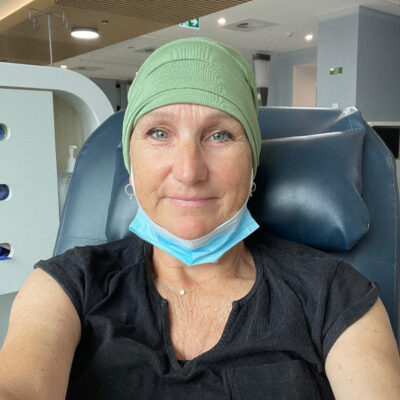One-two punch could knock out rare ovarian cancer
By Hudson Institute communications. Reviewed by Associate Professor Simon Chu

A double-barrelled, non-surgical method to treat a rare type of ovarian cancer may provide hope for many patients.
Granulosa cell tumours of the ovary are slow growing but have a high rate of recurrence and available treatments are nearly always unsuccessful. Once treated surgically, patients need to be monitored throughout their life and there are no viable treatments.
Facts: granulosa cell tumours
- Five out of 100 women with ovarian cancer have granulosa cell tumours
- These tumours produce hormones. Often, the first indication a woman has this type of cancer is when abnormally high levels of oestrogen are detected
- While this cancer is often initially treated successfully, it can recur between five to 20 years later, when it becomes resistant to chemotherapy
Now, a potential new treatment may prove a game-changer. One of the difficulties in treating cancer is the body’s own defence mechanisms that naturally blocks many cancer treatments from being effective.
Combination therapy breakthrough
Two recent publications, in Molecular Cancer Therapeutics and in the Journal of Proteome Research, undertaken by Dr Simon Chu and his team, has shown that a combination treatment tackles the problem by reducing the body’s defences with one drug, allowing the second drug to attack the cancer cells. This presents the first major progress in a treatment for ovarian granulosa cell tumours.
Dr Chu said patients are in need of non-surgical options, as these tumours commonly reappear after surgery.
“The need for more novel, targeted therapy cannot be overstated. Our work is focused on understanding what causes granulosa cell tumours so we can find more effective treatments. The exciting finding shows a combination approach could provide a new way to help women with this cancer,” Dr Chu said
Where to now?
These studies show promise for identifying an effective new treatment for this group of ovarian cancer patients and provide a foundation for advancement to clinical trials. As the drugs used are already in clinical or pre-clinical use, swift translation to the clinic may be possible.
While this research focused on granulosa cell tumours of the ovary, outcomes from this study may have broader impacts, including potential treatments for epithelial ovarian cancer, colorectal cancer and thyroid cancer.
Collaborators | Walter and Eliza Hall Institute, Monash Health
This research was supported by | Cancer Council Victoria, Ovarian Cancer Research Foundation, Granulosa Cell Tumour of the Ovary Foundation, Marsha Rivkin Center for Ovarian Cancer Research, NHMRC, US Department of Defense, The Ian Potter Foundation, Endocrine Society of Australia, Victorian Government
Journal | Molecular Cancer Therapeutics
Title | Combined PPARγ Activation and XIAP Inhibition as a Potential Therapeutic Strategy for Ovarian Granulosa Cell Tumors
View publication | https://doi.org/10.1158/1535-7163.MCT-18-0078
About Hudson Institute
Hudson Institute’ s research programs deliver in three areas of medical need – inflammation, cancer, women’s and newborn health. More
Hudson News
Get the inside view on discoveries and patient stories
“Thank you Hudson Institute researchers. Your work brings such hope to all women with ovarian cancer knowing that potentially women in the future won't have to go through what we have!”





